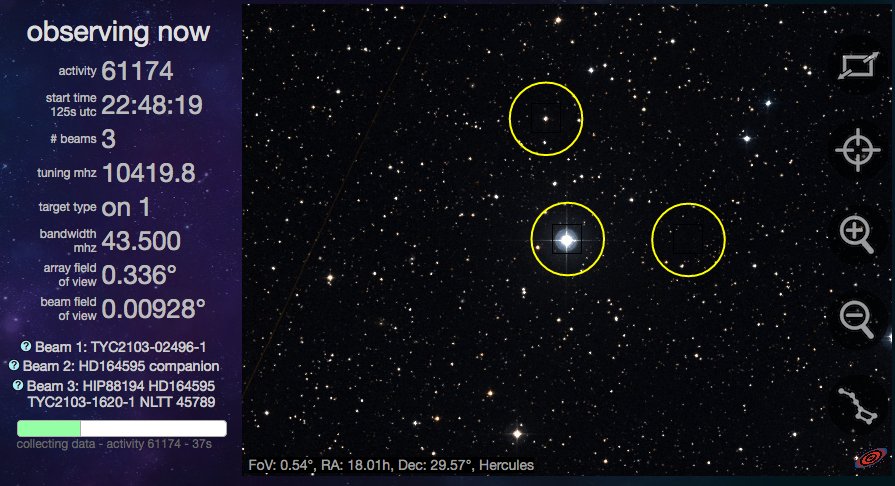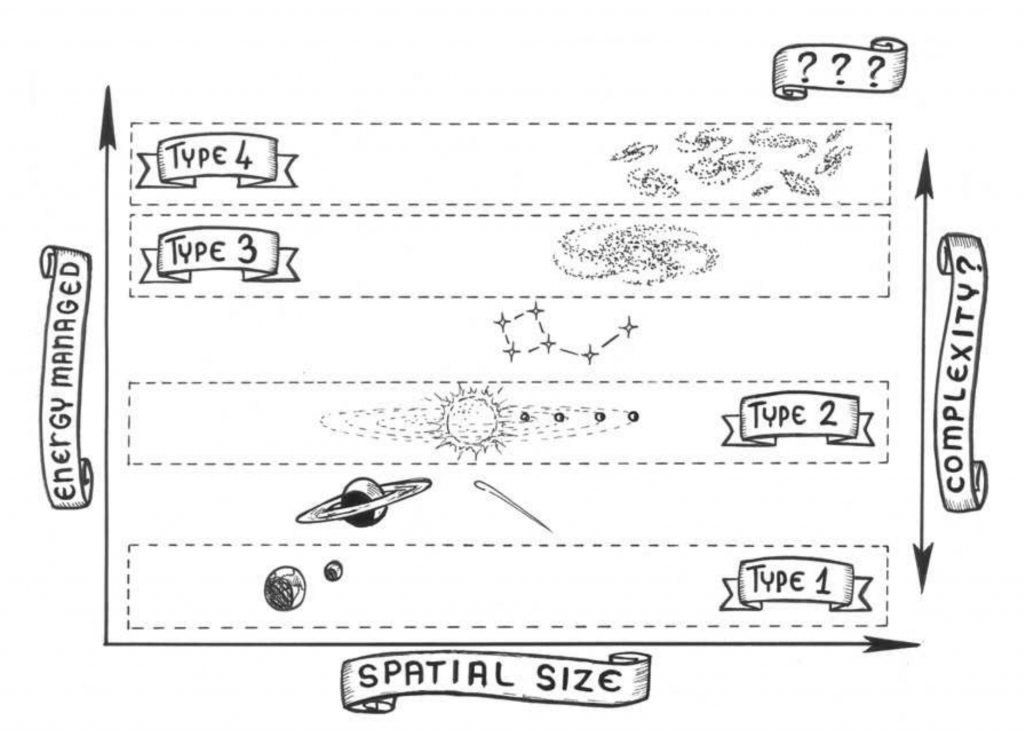The Observer http://observer.com/2016/08/not-a-drill-seti-is-investigating-a-possible-extraterrestrial-signal-from-deep-space/ has this story an it is intertesting that this all came about because of a privately circulated paper so that others could check and agree or disagree about the "signal". This is scientific caution and not looking like an ass -I'm old enough to remember "strange signals" detected by Jodrell Bank in the early days -those turned out to be interference from a lawn mower.
It is exciting but there is so much noise out in space everything has to be double and triple checked yet there has to be something if SETI is going to spend time and money on this.
My local radio station presenter just announced that "Scientists listened for a blip signal over the weekend. Guess what? They found nothing. Face it: we're alone in the universe, scary but that's it!" Well, there you have it. A man who can just about babble out a sentence, gets song titles wrong, seems stuck in the early 1990s and worries about his loss of hair just gave his opinion. SETI take note.

The RATAN-600 Radio Telescope in Russia. (Photo: Wikimedia Commons)




Kardashev’s motivation for coming up with the scale was that if we can understand how advanced civilisations source their energy, we can look for clues that they are harvesting or using it in our observations of stars and galaxies. In fact, his scale provides a crude way of quantifying the detectability of a technological civilisation. Type III civilisations would hypothetically have a huge impact on their host galaxies, and be clearly identifiable due to their interactions with galactic objects such as stars and black holes. More speculatively, the transportation and communication mechanisms such a civilisation might use between these bodies could also be detectable. Recent searches found no evidence that such a civilisation exists in any galaxies in the local universe, though. For Type I and II detectability is harder, but any Dyson spheres out there could be observable. They would absorb and reemit their host stars light, changing the observed spectrum.

Alternatives and extensions to the scale have been proposed. Type IV civilisations can control the energy of clusters of galaxies, or even the entire universe in some definitions. Such propositions can feel a touch ridiculous, and the scale has been criticised for being too speculative. If we cannot understand advanced civilisations, then surely it is impossible to predict their behaviour? Whilst this is arguably true, what is beyond doubt is the profound impact of such thinking on how we view our own civilisation and the means of powering it. Even if we are alone in the universe, the Kardashev scale has influenced the dialogue surrounding our own civilisations source of energy in the future. If we can avoid destroying our own planet through global warming, or ourselves through nuclear war, how will we power ourselves in to the vast and exciting future?
It is exciting but there is so much noise out in space everything has to be double and triple checked yet there has to be something if SETI is going to spend time and money on this.
My local radio station presenter just announced that "Scientists listened for a blip signal over the weekend. Guess what? They found nothing. Face it: we're alone in the universe, scary but that's it!" Well, there you have it. A man who can just about babble out a sentence, gets song titles wrong, seems stuck in the early 1990s and worries about his loss of hair just gave his opinion. SETI take note.

The RATAN-600 Radio Telescope in Russia. (Photo: Wikimedia Commons)
Not a Drill: SETI Is Investigating a Possible Extraterrestrial Signal From Deep Space
If the signal is truly from an alien world, it’s one far more advanced than ours
An international team of scientists from the Search for Extraterrestrial Intelligence (SETI) is investigating mysterious signal spikes emitting from a 6.3-billion-year-old star in the constellation Hercules—95 light years away from Earth. The implications are extraordinary and point to the possibility of a civilization far more advanced than our own.
The unusual signal was originally detected on May 15, 2015, by the Russian Academy of Science-operated RATAN-600 radio telescope in Zelenchukskaya, Russia, but was kept secret from the international community. Interstellar space reporter Paul Gilster broke the story after the researchers quietly circulated a paper announcing the detection of “a strong signal in the direction of HD164595.”
The mysterious star’s designation is HD164595, and it’s considered to be sun-like in nature with a nearly identical metallic composition to our own star. So far, a single Neptune-like (but warmer) planet has been discovered in its orbit—HD 164595 b. But as Gilster explained, “There could, of course, be other planets still undetected in this system.”
Decorated Italian SETI researcher and mathematician Claudio Maccone along with Russia’s Nikolai Bursov of the Special Astrophysical Observatory are the principal scientists working on the apparent discovery. They claim that “permanent monitoring of this target is needed.”
“The signal conceivably fits the profile for an intentional transmission from an extraterrestrial source,” said Alan Boyle, author of The Case for Pluto who reported thestory for Geekwire. “In any case, the blip is interesting enough to merit discussion by those who specialize in the search for extraterrestrial intelligence.”

Observing the latest star of interest - HD164595 - with the Allen Telescope Array. https://t.co/CvDTwQFaVT#ATASETI https://t.co/9rCZu5Bfzh
_______________________________________________________
The signal’s strength indicates that if it in fact came from a isotropic beacon, the power source would have to be built by a Kardashev Type II civilization. (The Kardashev scale is used to determine the progress of a civilization’s technological development by measuring how much energy was used to transmit an interstellar message.) An ‘Isotropic’ beacon means a communication source emitting a signal with equal power in all directions while promoting signal strength throughout travel.
In his acclaimed work “Transmission of Information by Extraterrestrial Civilizations,” Soviet astronomer Nikolai Kardashev explained that a Type II civilization would be able to harness the energy of their entire host star. The most common hypothetical example of this would be a Dyson Sphere—which is a massive artificial structure that could completely encapsulate a star and transfer the energy to a nearby planet.
Basically, if the signal was beamed out into the galaxy without aim or direction, that would require an enormous amount of power to actually be detected. But what if the signal was beamed specifically at our solar system? Well, that would require less energy and could indicate the presence of a Kardashev Type I civilization—meaning that it could be a highly technological, contemporary society that harnesses the solar energy emitted by its local star, much like our planet does with solar panels. This particular civilization’s social structure is theorized to be completely globalized and interconnected.
“The signal is provocative enough that the RATAN-600 researchers are calling for permanent monitoring of this target,” said Gilster. And that’s exactly what is transpiring. As of last night, the SETI institute is diverting its Allen Telescope Array in northern California to investigate while their counterparts at METI International (Messaging Extraterrestrial Intelligence) will use Panama’s Boquete Optical Observatory.
The detection of the mysterious signal and the ensuing investigations will be discussed at the IAA SETI Permanent Committee during the 67th International Astronautical Congress in Guadalajara, Mexico, on September 27—the same day and location where Elon Musk will reveal his plans to colonize Mars. The Observer will be following up on both these stories from the Congress.
Robin Seemangal focuses on NASA and advocacy for space exploration. He was born and raised in Brooklyn, where he currently resides. Find him on Instagram for more space-related content: @nova_road.

Above: a cut away diagram of an idealized Dyson Shell -a variant on Dyson's original idea.
Below: a far more dramatic interpretation of a Dyson Shere.

****************************************
The Kardashev Scale will need explaining and, luckily, astrobites gives a good explanation:
Classifying Civilisations: An Introduction to the Kardashev Scale

Nikolai Semenovich Kardashev in the 1960s
Theorising about extraterrestrials is hard. Since we only have one data point, our own little civilisation on our own little Earth, trying to pin down what extraterrestrial civilisations will look or behave like stretches the imagination, to put it mildly. But there is one commodity that most theorists agree any advanced civilisation will need in large quantities, and that’s energy. Just over 50 years ago, a Russian astrophysicist named Nikolai Semenovich Kardashev proposed a scale for ranking these hypothetical civilisations based on their energy consumption. The Kardashev scale was intended to help direct searches for signals from intelligent beings. Over the past few decades huge effort has gone in to detecting such signals, some of which have been written about here on Astrobites (seehere, here, here, and here). So anything that helps us narrow the search, or understand the target better, is certainly welcome. But the scale is more than just a practical tool. Since its inception it has led to hypothetical new energy consumption mechanisms, inspired generations of science fiction writers, and influenced thinking around our own future energy consumption.
The scale has three types that follow the scale of astrophysical structures in our local universe. A Type I civilisation has complete control over the energy of its host planet. It would, for example, be capable of collecting all the starlight that falls on the planet. Other than coating the surface completely with solar panels, collecting such vast amounts of starlight could be achieved using solar power satellites, transmitting the energy to the surface wirelessly. Power from fusion reactions on an industrial scale could also be used to produce similar amounts of energy over geological timescales.
Type II civilisations have control over the energy of their entire host stars. The engineering challenge of achieving this would be huge, but conceivable structures have been proposed. One of the most famous is the Dyson Sphere, which encompasses an entire star and captures all or the majority of its energy output. A candidate for such a system has been proposed recently, the snappily named KIC 8462852. It’s light has been changing erratically in ways hard to explain through our current understanding of the physics of stars. But is it a Dyson Sphere? It’s a controversial claim, and certainly not one that will be confirmed any time soon until further, detailed observations can be made.
Type III civilisations completely blow the first two away, being capable of controlling the energy of an entire galaxy. This could be achieved using a whole population of Dyson spheres around all the stars in a galaxy, or by tapping the energy of the Black Hole at the center of the galaxy. Controlling energy on this scale would require unimaginable feats of engineering, as well as interstellar transportation mechanisms far beyond human capabilities today.
Puny Earthlings
Where does our own civilisation sit on this scale? Kardashev initially proposed that humanity was close to a Type I, but subsequent reclassifications have taken a more self-critical view. Carl Sagan’s modified Kardashev scale, which allows for continuous values, put humanity at a meagre 0.7. Some predict that our total power consumption could hit Type I levels on Sagan’s scale in around 200 years, but we are still incredibly far from realising Type II or III status.Kardashev’s motivation for coming up with the scale was that if we can understand how advanced civilisations source their energy, we can look for clues that they are harvesting or using it in our observations of stars and galaxies. In fact, his scale provides a crude way of quantifying the detectability of a technological civilisation. Type III civilisations would hypothetically have a huge impact on their host galaxies, and be clearly identifiable due to their interactions with galactic objects such as stars and black holes. More speculatively, the transportation and communication mechanisms such a civilisation might use between these bodies could also be detectable. Recent searches found no evidence that such a civilisation exists in any galaxies in the local universe, though. For Type I and II detectability is harder, but any Dyson spheres out there could be observable. They would absorb and reemit their host stars light, changing the observed spectrum.

Above:Cartoon showing the different Kardashev types. Each rung on the ladder uses larger astrophysical objects as its energy source, from single planets to whole clusters of galaxies. Source: Cirkovic 2015, Kardashev’s Classification at 50+: A Fine Vehicle with Room for Improvement
Alternatives and extensions to the scale have been proposed. Type IV civilisations can control the energy of clusters of galaxies, or even the entire universe in some definitions. Such propositions can feel a touch ridiculous, and the scale has been criticised for being too speculative. If we cannot understand advanced civilisations, then surely it is impossible to predict their behaviour? Whilst this is arguably true, what is beyond doubt is the profound impact of such thinking on how we view our own civilisation and the means of powering it. Even if we are alone in the universe, the Kardashev scale has influenced the dialogue surrounding our own civilisations source of energy in the future. If we can avoid destroying our own planet through global warming, or ourselves through nuclear war, how will we power ourselves in to the vast and exciting future?
Practical applications
Are we alone(r)?
Alternatives and extensions to the scale have been proposed. Type IV civilisations can control the energy of clusters of galaxies, or even the entire universe in some definitions. Such propositions can feel a touch ridiculous, and the scale has been criticised for being too speculative. If we cannot understand advanced civilisations, then surely it is impossible to predict their behaviour? Whilst this is arguably true, what is beyond doubt is the profound impact of such thinking on how we view our own civilisation and the means of powering it. Even if we are alone in the universe, the Kardashev scale has influenced the dialogue surrounding our own civilisations source of energy in the future. If we can avoid destroying our own planet through global warming, or ourselves through nuclear war, how will we power ourselves in to the vast and exciting future?

No comments:
Post a Comment